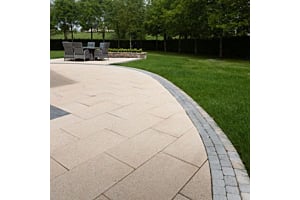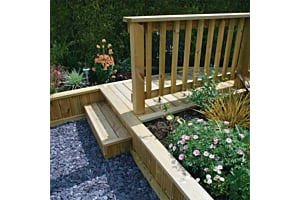We consider all sorts of style elements, but rarely do we give thought to the shower tray. Yet, is this not one of the most important features of the shower? Without a shower tray, the water flowing from our shower head would be running all over the bathroom floor and flooding the bathroom. The shower tray of the shower is an absolutely vital feature, and it is important it is fitted properly.
As always, we recommend you get a professional to look at any plumbing jobs within your home. You can drop into your local Plumbmaster branch and we will be more than happy to organise for someone to carry out the task at hand. However, if you have the DIY skills, fitting a shower tray is something that you can do yourself, and in this article we are going to go through the steps on how to do this.
Types of Shower Trays
Before you begin, you will need to know the type of shower tray you are fitting. Not only the material, but how it is going to be fitted. There are two ways a shower tray can be fitted: either directly onto the floor, or you can adjust the height and have a raised shower tray which sits on legs. This will largely depend on the material your shower tray is made of. Most trays are made of stone resin which is an extremely heavy material and will not need legs to sit on but can be fitted flush with the floor. Shower trays come in a wide range of shapes and sizes to fit all bathroom types, so before we begin our step by step guide, our first and most important step is to make sure you accurately measure your bathroom and shower enclosure to get the correct size shower tray for your shower.
Once you have decided on the type of shower tray you are going for, you have accurately measured the fittings and you are now ready to install, it is now time to prepare the area. Remove any protective coverings on the shower floor and around the plug hole, and ensure the correct fittings are attached to the top of the waste pipe and secure the fittings around the plughole. If your shower tray is going to be laid directly on the floor, it is now time to line everything up and mark with a pencil the area it will be covering. If the shower tray is going to be raised, you will now need to insert the feet in the correct positions using a screwdriver. Make sure to use a spirit level also so everything is even.
Fitting A Shower Tray
Fitting a shower tray that rests directly on the floor is often the easiest option, as all you have to do now is spread an even layer of mortar on the ground where you had previously marked with a pencil. Add a thin layer of adhesive to the bottom of the tray also, and then simply fit it in place. (Make sure the plug hole aligns with the waste fitting and use a spirit level to make sure it is flat!) Fitting a raised shower tray is somewhat similar: apply silicone sealant to the previously fitted shower tray legs and fix them to the floor. This application is a little trickier as you will need to make sure all the legs are even. Again, make sure the plug and waste trap are perfectly aligned.
Lastly, now that your shower tray has been fitted, you will need to make sure it is watertight. You can do this with a caulking gun: simply apply a thin layer of silicone around the edges of the shower tray where it meets the wall to create a watertight seal. It is best if your shower is fitted before the bathroom is tiled as this will give a better seal around the edges.
The waste outlet pipe will need secured at this stage also. This can vary from tray to tray, but simply look at the guide that came with your shower tray and that will let you know if the outlet can be tightened from above or below. You will notice that the bottom of your tray will be sloped to make sure the water runs the correct way. However, this is a natural sloping of the shower tray and you do not need to tilt it in any way: when fitting always use a spirit level.
Plumbmaster Are Here To Help!
We hope this Plumbmaster guide on how to fit a shower tray has proved useful and you are now prepared to take on this task in your own home. If you’ve any further queries, feel free to call in to your local Plumbmaster branch, or you can contact us via our website. Here at Plumbmaster we can not only provide you with any of the plumbing equipment you may need, but we can also provide you with the professionals to carry out the job at hand.




